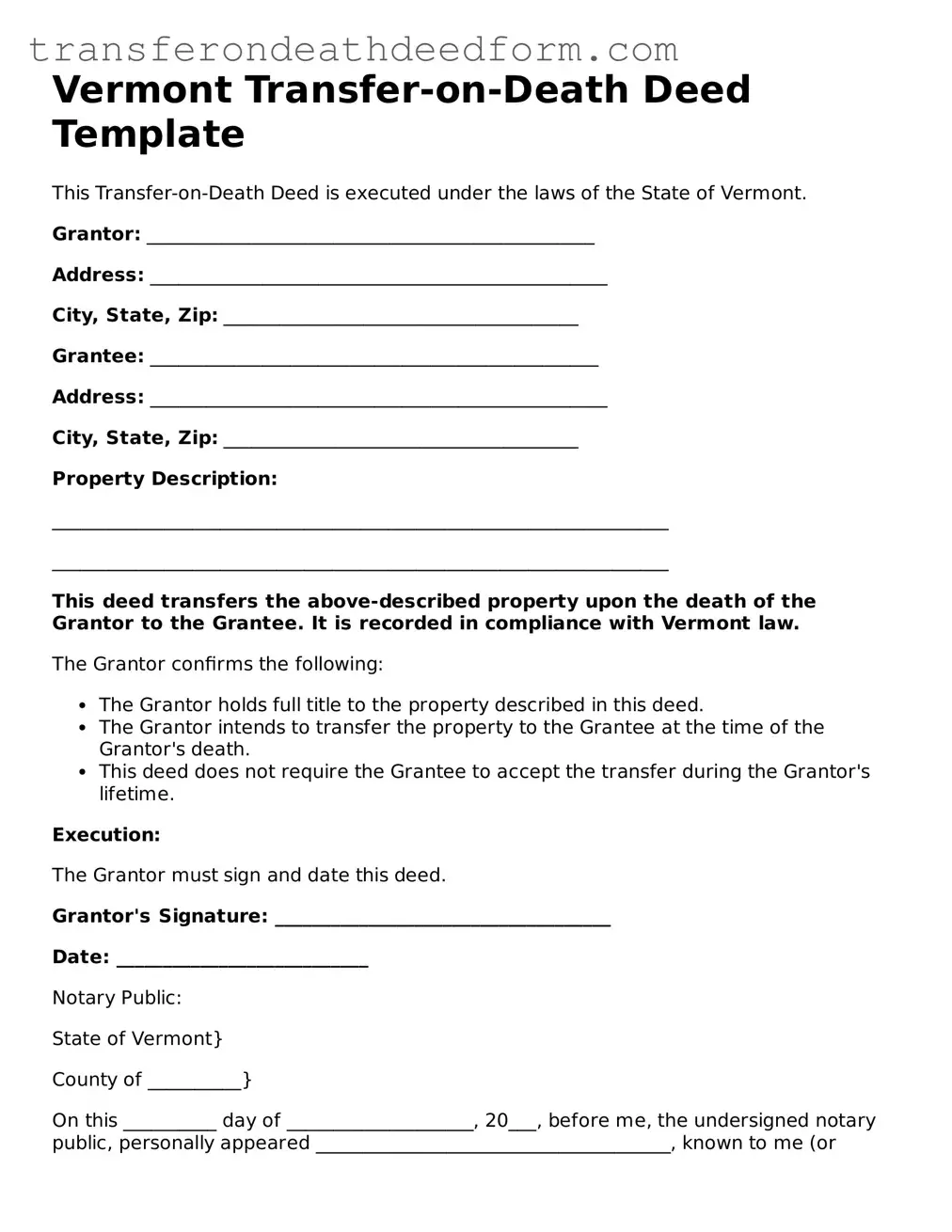Vermont Transfer-on-Death Deed Template
This Transfer-on-Death Deed is executed under the laws of the State of Vermont.
Grantor: ________________________________________________
Address: _________________________________________________
City, State, Zip: ______________________________________
Grantee: ________________________________________________
Address: _________________________________________________
City, State, Zip: ______________________________________
Property Description:
__________________________________________________________________
__________________________________________________________________
This deed transfers the above-described property upon the death of the Grantor to the Grantee. It is recorded in compliance with Vermont law.
The Grantor confirms the following:
- The Grantor holds full title to the property described in this deed.
- The Grantor intends to transfer the property to the Grantee at the time of the Grantor's death.
- This deed does not require the Grantee to accept the transfer during the Grantor's lifetime.
Execution:
The Grantor must sign and date this deed.
Grantor's Signature: ____________________________________
Date: ___________________________
Notary Public:
State of Vermont}
County of __________}
On this __________ day of ____________________, 20___, before me, the undersigned notary public, personally appeared ______________________________________, known to me (or satisfactorily proven) to be the person whose name is subscribed to this instrument, and acknowledged that he/she executed the same for the purposes therein contained.
In witness whereof, I hereunto set my hand and official seal.
____________________________________ (Seal)
Notary Public
My commission expires: ____________________
